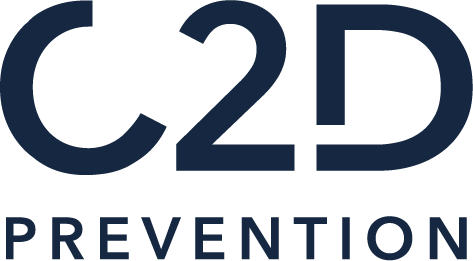Why is employee autonomy essential?
For over forty years, Self-Determination Theory (Deci & Ryan) has shown that three psychological needs are fundamental to both health and performance:
- autonomy,
- competence,
- and social affiliation.
Among them, the sense of autonomy plays a central role: it determines the quality of engagement and the long-term effectiveness of teams.
Recent research (2020–2024) confirms this importance:
- A study by Cotič et al. (2025) shows that job characteristics – in particular autonomy – are powerful predictors of employee engagement (Cotič et al., 2025). Likewise, autonomy is inversely correlated with the intention to leave the organisation.
- Managerial support for autonomy directly improves psychological well-being through work engagement, according to Montoya et al. (2025).
- Autonomy fosters resilience in the face of stress and the ability to adapt one’s job (job crafting). Nie et al. (2023)demonstrate that autonomy and work meaning are key drivers of proactive adaptive behaviours (Nie et al., 2023).
- In modern work contexts (hybrid telework, algorithmic management, digital intensification), flexibility and autonomyemerge as protective factors against cognitive overload and isolation (Biron & van Veldhoven, 2024; ScienceDirect).
An employee who feels autonomous does not merely execute tasks. They take initiative, adjust their methods, innovate and project themselves into the organisation’s future.

Which managerial practices strengthen autonomy?
1. Autonomy-supportive leadership
Recent studies show that autonomy-supportive management significantly enhances employees’
(Van den Broeck et al., 2021; Montoya et al., 2025). Participatory and empowering leadership is based on simple yet powerful behaviours:
- offering structured choices (methods, sequencing, time management),
- providing meaning by explaining the why behind objectives,
- acknowledging employees’ constraints and emotions,
- giving constructive, progress-oriented feedback.
In practice, even short management training courses (3–5 hours + follow-up) can already initiate this transformation.
2. Genuine delegation and participation
Autonomy flourishes when employees can influence meaningful decisions:
- co-constructing objectives,
- delegating priority setting or tool choice,
- involving teams in strategic decisions at unit level.
Recent studies show that such approaches increase employee engagement and the quality of everyday innovation. Involved employees feel responsible and develop creative solutions that enhance both safety and organisational performance.
3. Work design and organisation
- method autonomy – freedom in how to achieve results (OKRs focused on objectives rather than presence),
- planning autonomy – ability to organise one’s priorities and time,
- sequencing autonomy – reducing micro-supervision and unnecessary approvals.
Even in highly regulated environments (industry, construction, pharmaceuticals), such degrees of freedom strengthen psychological safety and motivation.
4. Resources, skills and feedback
Autonomy does not mean absence of structure. For it to be healthy and sustainable, three levers are essential:
- Resources: tools, accessible information, sufficient time.
- Skills: continuous training, mentoring, coaching to reinforce mastery.
- Feedback: regular, constructive input aligning individual initiatives with collective strategy.
Thus conceived, autonomy is not an abdication of control, but a protective and stimulating framework that nurtures psychological safety and sustainable performance.
What are the effects of autonomy on health and safety at work?
According to EU-OSHA (2024, ESENER), lack of autonomy is one of the most frequently cited psychosocial risk factors in European companies. Conversely, a high level of autonomy:
- reduces stress,
- promotes psychological safety,
- and enhances organisational resilience
The WHO (2023) also highlights autonomy as a key determinant of mental health at work.
Conclusion
Management that develops autonomy does not weaken performance – it strengthens it.
By giving employees the ability to choose, influence, understand and take ownership of their work, organisations achieve:
- more motivated and engaged teams,
- more innovative and resilient organisations,
- a protective climate for health and safety at work.
Investing in autonomy means building a culture of prevention, sustainable performance and well-being.
Our solutions
At C2D Prévention, we are specialists in risk prevention and the development of sustainable health and safety cultures.
We support organisations across sectors – from industry to services – in implementing appropriate managerial practices through:
psychosocial risk (PSR) prevention,
development of participatory leadership,
long-term improvement of team motivation and safety.
Contact us today to strengthen the organisational health and sustainable performance of your teams.
Key Takeaways
- Autonomy is a key factor in satisfaction, engagement and PSR prevention.
- It protects against cognitive overload and promotes psychological safety.
- Participatory managerial practices (co-construction, constructive feedback) boost innovation and motivation.
- Appropriate work design and access to resources turn autonomy into a lever for prevention and organisational performance.
- C2D Prévention helps companies build a high-performing, sustainable health and safety culture.
What are the effects of autonomy on workplace health?
It reduces stress, promotes psychological safety and strengthens employees’ resilience.
How can autonomy be developed without losing control?
By framing it with clear objectives, regular feedback and suitable resources.
What is the link between autonomy and psychosocial risk prevention?
High autonomy protects against cognitive overload, isolation and disengagement.
Why work with C2D Prévention?
Because we specialise in risk prevention and in supporting organisations towards a sustainable, sector-specific health and safety culture.
Deci, E. L., & Ryan, R. M. (2000). Self-determination theory and the facilitation of intrinsic motivation, social development, and well-being. American Psychologist, 55(1), 68–78.
INRS. (2025). Travail sur écran : risques pour la santé. Institut National de Recherche et de Sécurité. https://www.inrs.fr/risques/travail-ecran/risques-sante.html
World Health Organization (WHO). (2023). Mental health in the workplace. WHO. https://www.who.int/news-room/fact-sheets/detail/mental-health-at-work
European Agency for Safety and Health at Work (EU-OSHA). (2024). ESENER 2024: Psychosocial risks in European workplaces. EU-OSHA. https://osha.europa.eu
Biron, M., & van Veldhoven, M. (2024). The psychological experience of flexibility in the workplace. Organizational Behavior and Human Decision Processes, 187, 100923. https://doi.org/10.1016/j.obhdp.2024.100923
Cotič, T., Podnar, K., & Golob, U. (2025). Job characteristics and employee engagement: Revisiting the Job Characteristics Model in contemporary workplaces. Journal of Organizational Effectiveness: People and Performance, 12(1), 45–61. https://doi.org/10.1002/joe.22295
Montoya, I. A., Rangel, L. G., & Fernández, P. (2025). Work engagement as a mediator between autonomy support and psychological well-being. International Journal of Management Studies, 32(2), 77–94. Disponible sur : https://www.researchgate.net/publication/387795481_WORK_ENGAGEMENT_AS_A_MEDIATOR_BETWEEN_AUTONOMY_SUPPORT_AND_PSYCHOLOGICAL_WELL-BEING
Nie, Y., Chai, D. S., & Leung, A. (2023). Job autonomy and work meaning as drivers of employee job-crafting behaviors. Frontiers in Psychology, 14, 1134823. https://doi.org/10.3389/fpsyg.2023.1134823
Morgeson, F. P., & Humphrey, S. E. (2006). The Work Design Questionnaire (WDQ): Developing and validating a comprehensive measure for assessing job design and the nature of work. Journal of Applied Psychology, 91(6), 1321–1339. https://doi.org/10.1037/0021-9010.91.6.1321
Bakker, A. B., & Demerouti, E. (2017). Job demands–resources theory: Taking stock and looking forward. Journal of Occupational Health Psychology, 22(3), 273–285. https://doi.org/10.1037/ocp0000056
